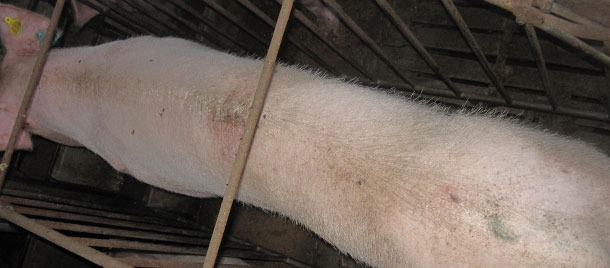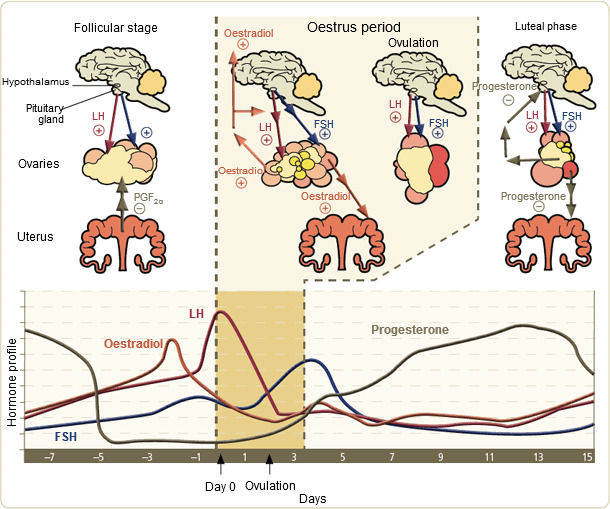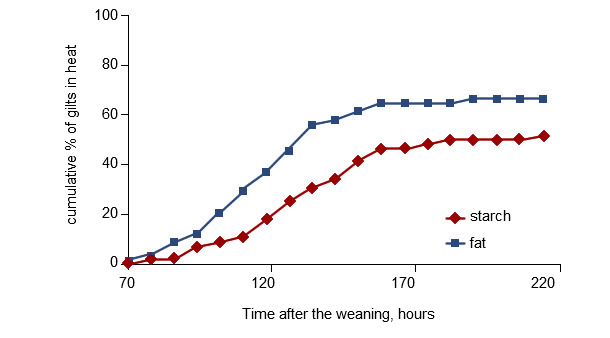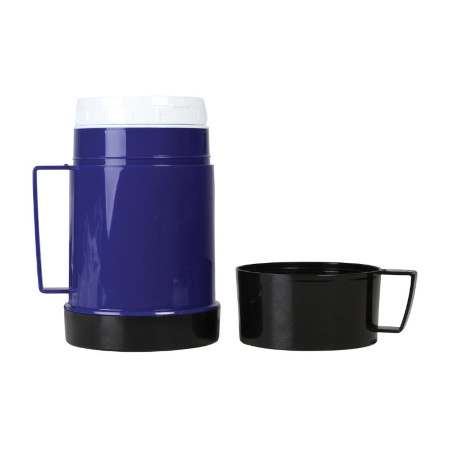The choice of hyperprolific sows is becoming common practice in pig farms, and due to this, the nutritional requirements are higher with respect to traditional genetic lines. The trends in the feeding of sows go towards a higher specialisation depending on the production stage. So, we could talk about special feed for gilts, feeding according to the different stages during the pregnancy, taking advantage of the group housing of fetating sows. There are farms that already include a prepartum feed, other farms have a specific feeding for lactating primiparous sows… And what about the weaning-to-service interval (WSI)?
It is a key period for the sow's future production cycle. Our goal is that more than 90% of the weaned sows have a WSI of 6 days or less. Which benefits shall we obtain?

- The sows inseminated between the third and fifth day after weaning will show better fertility and prolificacy rates.
- Regular batches and a correct planning are kept, and the goals regarding the number of farrowings are attained.
- Non-productive days are reduced. In Table 1 we can see how the WSI average in Spain is 6.28 days. The difference between the best and the worst farms is only one day (5.9-6.82). If we compare the weaning-to-fertile-service interval (WFSI) it is then three days (8.19-11.33). The farms with a worse WSI have more non-productive days, a lower number of farrowings per year and, so, a lower productivity.
- The percentage of sows culled due to anoestrus is reduced.
Table 1. WSI/WFSI in Spain 2012 (BDporc)
| Days | Best | Average | Worst |
| WSI | 5.9 | 6.28 | 6.82 |
| WFSI | 8.19 | 9.14 | 11.33 |
And how can we feed our sows in order to attain these WSI goals?
A key point is the management of feeding in the lactation stage. A low feed intake and an excessive loss of body reserves (>10% of the LW) during this period are one of the main causes for anoestrus.

Figure 1. Weaned sow with a poor body condition score. It will be at risk of suffering anoestrus.
If we focus on the post-weaning period, the recommendations are to feed the sows ad libitum with pregnant sows' feed (there are farms in which they keep the lactating sows feed depending on the body condition score of the batch of weaned sows). Likewise, we must ensure a correct water consumption regarding the amount and quality. The husbandry practices in which the weaned sows were fasted (including water fasting) are long gone. Those were other times, and the sows were different.
Following the aforementioned trend regarding the feeding of the sows according to their production stage, special feeds and supplements (top dressing) are being designed for stimulating the sows' ovulation (flushing), reducing the WSI and increasing fertility and prolificacy in the following production cycle. Their main feature is a high content in starches and sugars (dextrose, molasses) as the chief energy source. They contain high levels of vitamin A, riboflavin, folacin and B group vitamins, which have an important role in the first stages of the embryo development.
The basis is that the diets that are rich in carbohydrates and sugars increase the insulin blood concentration, and these high levels are related to a higher frequency of the preovulatory LH pulses that, in turn, are basic for the follicular development and reduce the length of the WSI.
Also, insulin is related to a higher concentration of progesterone, which is associated with a higher embryo survival.

So, the blood insulin concentration, the LH pulses and the progesterone levels can be manipulated with the energy source in the diet.

Figure 2. Representation of the sow's hormone levels during the oestrus cycle.
In tests that compared carbohydrate-rich diets with other diets that were rich in fat as the energy source, it was seen that the sows fed with the first kind of diet had a lower WSI and a better grouping of the oestrus (Van den Brand et al. -Table 2).

Other studies show that the use of glycogenic diets, especially during the last week of the lactation and during the WSI, can have an influence on the homogeneity of the next litter. The main goal is to avoid that the sow loses too much weight, especially during the second half of the lactation stage.
In conclusion, the weaning-to-service interval is a short period, but it is crucial with regard to the productivity of the sow. We must control the factors that have an influence on its length, including the feeding.




